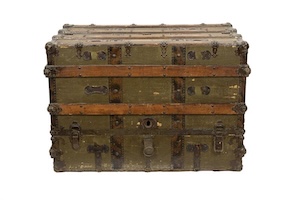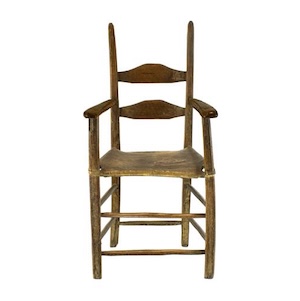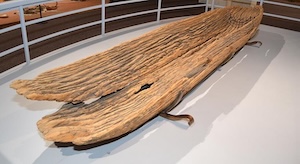As we settle into our new home, one of the most noticeable changes—beyond the square footage—is the way our exhibitions are organized. Before you explore the exhibit floor yourself, I would like to share the thinking behind our new approach and how it is designed to shape your experience.

Curating an exhibition is much like assembling a puzzle. Each object selected serves a purpose within the overarching theme. My role is to ensure that these pieces fit together cohesively, without forcing connections or diluting meaning. The end goal is not a single, fixed image, but rather a framework that supports multiple interpretations—a puzzle that each visitor builds through their own lens.
We want our guests to discover and reflect—to see yourselves in the stories, ask questions, and make connections that resonate with you long after you visit.
Supporting this experience, the main gallery exhibition titled Common Threads is organized into four thematic sections:
- Home and Family Life – where culture is created, shared, and lived.
- Honoring Heritage and Traditions – inspiring reflection on how varied communities preserve, adapt, and express cultural identity.
- Arts and Culture – celebrating the unique influences and dynamic exchange of ideas that define the state’s evolving creative legacy.
- Celebrating Community – honoring unity and resilience across Texas, where connection thrives through celebration and service.
For a unique state like Texas, this type of presentation is especially important, where stories intersect across space and time. The layout intrinsically calls for the presence of multiple voices and experiences, acknowledging that culture is fluid, living, and evolving. Where each generation helps shape the future like threads in a tapestry, Common Threads thoughtfully reflects that in concept and form.

One powerful example of thematic curation and bringing objects in conversation with one another is found in Home and Family Life, where a 1920s steamer trunk sits beside a Spanish Colonial chair from the 1820s. Chronologically, these objects are separated by a century. Based on their dates, even Texas was not as we know it today. Yet thematically, they converge to explore migration, resourcefulness, and the making of home in the Lone Star State.

This pairing prompts a deeper look and makes us wonder: What did people pack in that trunk? What did they leave behind? Or, How was the chair made? What materials were available? These questions open access points—historical, personal, material, and emotional—allowing for deeper engagement and understanding.
It is important to note that this exhibit is not just about objects—it is about people. Community engagement has been central to our curatorial process. Not only have we sought loans from the community, but also their voices, perspectives, and expertise. Curatorially, we have married scholarship with the value of lived experience, creating a space where stories are shared, not just displayed.

In Honoring Heritage and Traditions, the cottonwood dugout canoe anchors the exhibit’s opening. This object is not just a historical artifact—it is a living story. We engaged the Karankawa Tribe of Texas, including the Five Rivers Council, for review and input of didactic materials and images included in the canoe’s associated digital exhibit. In collaborative spirit, the tribe also contributed original artwork and personal photographs, connecting past to present. Through this use of multimedia and leveraging technology, we can expand its narrative and heighten accessibility beyond the museum walls.
In the end, this new approach to our exhibits is about curating with purpose—curating for connection. By embracing a thematic framework, we open the door to richer, more layered exhibits that reflect the complexity of the world while highlighting our similarities and celebrating our differences. Placing seemingly unrelated objects in conversation with one another also reflects how we live today: as neighbors, in community with each other. As curators, we are not just organizers of objects—we are story sharers, facilitators, and bridge-builders. And when we curate with a thematic lens, we invite our audiences to become co-creators of meaning, piecing together their own understanding of the whole. Hopefully, we see our role and impact in the world around us, too.
Until then, I look forward to welcoming you in our new home soon.